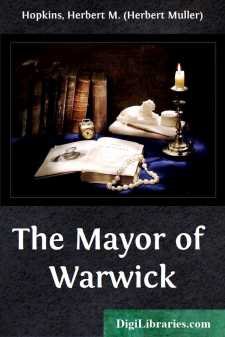Categories
- Antiques & Collectibles 13
- Architecture 36
- Art 48
- Bibles 22
- Biography & Autobiography 813
- Body, Mind & Spirit 142
- Business & Economics 28
- Children's Books 17
- Children's Fiction 14
- Computers 4
- Cooking 94
- Crafts & Hobbies 4
- Drama 346
- Education 46
- Family & Relationships 57
- Fiction 11829
- Games 19
- Gardening 17
- Health & Fitness 34
- History 1377
- House & Home 1
- Humor 147
- Juvenile Fiction 1873
- Juvenile Nonfiction 202
- Language Arts & Disciplines 88
- Law 16
- Literary Collections 686
- Literary Criticism 179
- Mathematics 13
- Medical 41
- Music 40
- Nature 179
- Non-Classifiable 1768
- Performing Arts 7
- Periodicals 1453
- Philosophy 64
- Photography 2
- Poetry 896
- Political Science 203
- Psychology 42
- Reference 154
- Religion 513
- Science 126
- Self-Help 84
- Social Science 81
- Sports & Recreation 34
- Study Aids 3
- Technology & Engineering 59
- Transportation 23
- Travel 463
- True Crime 29
The Mayor of Warwick
Description:
Excerpt
CHAPTER I
St George's Hall, situated on a high hill overlooking the city of Warwick, was still silent and tenantless, though the long vacation was drawing to a close. To a stranger passing that way for the first time, the building and the surrounding country would doubtless have suggested the old England rather than the new. There was something mediaeval in the massive, castellated tower that carried the eye upward past the great, arched doorway, the thin, deep-set windows, the leaded eaves and grinning gargoyles, into the cool sky of the September morning.
The stranger, were he rich in good traditions, would pause in admiration of the pure collegiate-gothic style of the low hall that extended north and south three hundred feet in either direction from the base of the great tower; he would note the artistry of the iron-braced, oaken doors, flanked at the lintels by inscrutable faces of carven stone, of the windows with their diamonded panes of milky glass peeping through a wilderness of encroaching vines. Nor would this be all. Had he ever viewed the quadrangles of Oxford and Cambridge, he might be able to infer that here, on this sunny plateau above the hill, devoted men, steept in the traditions of old England, had endeavoured to reproduce the plan of one of her famous colleges.
He would see, perhaps, that only one side of the quadrangle was built, one fourth of the work done. Here, along the northern line, should be the chapel, its altar window facing the east; on the southern, the dining-hall, adorned with rafters of dark oak and with portraits of the wise and great. To complete the plan, the remaining gap must be closed by a hall similar in style to the one already built.
He might picture himself standing in the midst of this beautiful creation of the imagination, taking in its architectural glories one by one, until his eye paused at the eastern gateway to note the distant landscape which it framed. And then, if he were in sympathy with the ideals of which this building was the outward expression, he would wake from his constructive reverie to realise sadly for the first time, not the beauty, but the incompleteness, of the institution; not its proximity to the city beyond, but its air of aloofness from the community in which it stood.
About ten o'clock of the morning in which this story begins, a stranger, not quite such an one as we have imagined, left the car at the foot of the long hill and turned his face for the first time towards St. George's Hall. As he passed up the shaded street along the northern side of the campus, his keen, blue-grey eyes swept eagerly the crest on which stood the institution that was destined to be the scene of his professional labours for at least a year, perhaps for many years, it might be, for life. Even a casual glance at the tall, loosely hung figure of the young man, at his clean-cut features and firm mouth, at the nervous, capable hand that grasped his walking-stick as if it were a weapon, would reveal the type claimed by America as peculiarly her own....


